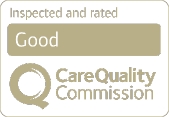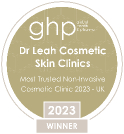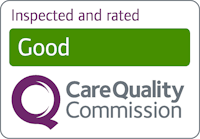What are moles?
Moles, including facial moles, are a type of excess skin growth which are normally harmless, they are caused when skin cells called melanocytes grow in clumps or clusters.
What causes moles?
Moles are caused when skin cells called melanocytes grow in clumps or clusters. Melanocytes are present throughout the body and are responsible for production of melanin, a natural chemical that causes skin pigmentation. Facial moles, like moles in other parts of the body, typically appear as small, black, tan, or dark brown spots. They can also be pink or red in colour. They can be raised, flat, wrinkled, or smooth. They are usually oval or round in shape.Moles generally form during childhood or adolescence and can continue developing until the age of 50. Some moles may fade with time or alter in appearance. Most moles are harmless. However, they may become cancerous in rare cases. It is therefore important to monitor moles, as doing so is crucial to early detection of skin cancer, particularly malignant melanoma.
When should you be concerned about a mole?
Generally speaking when a new mole appears in adulthood, you should see a doctor to check it out. If an existing mole is itching, bleeding, oozing, or painful, see a doctor right away.
If a mole exhibits any of the below changes you should see your GP immediately (the ABCDE guide can help remember the changes to look out for)
If a mole exhibits any of the below changes you should see your GP immediately (the ABCDE guide can help remember the changes to look out for)
- A refers to asymmetrical shape of a mole
- B refers to notched, irregular, or scalloped borders of a mole
- C refers to changes in colour of moles or moles with uneven colours
- D refers to diameter of the mole; a mole that is larger than 6 millimetres or ¼ of an inch in diameter can be malignant.
- E refers to evolution of a mole, i.e., changes in colour, shape, size, or height of a mole.
WHAT ARE MY TREATMENT OPTIONS FOR FACIAL MOLES
Dr Leah Clinic offer mole removal Mole Removal.
You can have a mole on your face examined by one of our specialist doctors and removed at the same consultation.
Our doctor will examine your mole under Dermascope and proceed to remove it in the same appointment.
Your mole on the face will be removed using local anaesthetic, with you awake throughout.
The mole on your face can be removed by one of three techniques, depending on the size and shape of the mole. This will be decided at your consultation.
You can have a mole on your face examined by one of our specialist doctors and removed at the same consultation.
Our doctor will examine your mole under Dermascope and proceed to remove it in the same appointment.
Your mole on the face will be removed using local anaesthetic, with you awake throughout.
The mole on your face can be removed by one of three techniques, depending on the size and shape of the mole. This will be decided at your consultation.
- Shave Excision - this is suitable for a protruding mole, minimally invasive, no stitches required. Can leave a round pinkish scar where the mole has been
- Curette and Cautery - a wire with a small electrical charge is used to burn the mole away. Minimally invasive, no stitches required. Can leave a round pinkish scar where the mole has been
- Elliptical Surgical Excision - mole is cut away surgically under local anaesthetic. Slightly more invasive than the other two methods. Stitches required and you will need to attend clinic 7 days later to have them removed. You may see a fine white line scar where the mole has been.
Why Dr Leah Clinics for your Mole removal London?
- Specialist mole removal doctor - our skin doctors are highly trained specialists in mole checks and mole removal. We are CQC registered to deliver mole removal services and adhere to the highest standards of clinical practice.
- Focused on minimising scarring for your Mole Removal London - We are a cosmetic clinic so unlike other mole removal providers we have a specific focus on the cosmetic aspect of the treatment and take active steps to minimise any scarring from the treatment. This includes ensuring our mole removal doctors during our mole removal London procedure are cosmetic aware, offering multiple techniques for mole removal. We also offer a ‘scar review’ at 6 weeks and half-price scar treatment if required.
- State-of-the- art Clinic in convenient location - We offer our Mole Check London procedure at our conveniently located state-of-the-art Baker Street Clinic, which is a 1 minute walk from Baker Street tube station. If you prefer to drive, we are directly opposite the exit of 170 Marylebone Road Car Park where you can pre-book to park.
- Skincare for mole prone skin - Obagi SPF
Scar review appointment
You will be offered a scar review appointment with one of our skin therapists 6 weeks after your mole removal. The area will be assessed and options to minimise a scar, if present, can be discussed. Any treatment required is offered at half price at this appointment.
COMMONLY ASKED QUESTIONS
We have two types of consultations for individual moles:
‘Individual Mole check consultation’: Cost £100 *non-refundable/redeemable. This is the appointment you should book if you would like a particular mole checked but do not wish for it to be removed on the same day. During this consultation our specialist doctor will check your mole using a device called a dermascope. This will allow the doctor to identify if there is anything you should be aware of regarding the mole.
‘Individual Mole check consultation’: Cost £100 *non-refundable/redeemable. This is the appointment you should book if you would like a particular mole checked but do not wish for it to be removed on the same day. During this consultation our specialist doctor will check your mole using a device called a dermascope. This will allow the doctor to identify if there is anything you should be aware of regarding the mole.
There is no definitive sign that indicates cancerous moles. In general, if you are at all concerned about a mole on your body or face you should book an appointment as soon as possible with your doctor or visit Dr Leah Clinics for a mole check. These are the signs to watch out for with a mole you have concerns about:
- Irregular shaped mole - if a mole develops an irregular shape have it checked.
- Bleeding mole on face or body - If you have not caught or cut a mole and it begins to bleed on a regular basis you should have this checked
- Itchy mole on face or body - If a mole starts itching and continues to do so, book a check
- New mole on face or body - which is increasing in size should be checked immediately
- Mole growing - If a mole starts growing in size this should be checked
- Changing colour - If a mole starts changing colour it should be checked
Depending on the type of mole removal you have had, you will have either a pinkish mark where the mole had been (shave excision) or a thin white line with stitches (surgical excision).
The skin left behind may feel tender for a few days and will need to be covered with a plaster. It’s also best to use medical SPF on the area for the next 6 months as it will be sensitive to the sun. If you have had a surgical excision you will be offered an appointment 1 week later to remove your stitches.
With all types of mole removal London treatment we offer a ‘scar review’ with one of our aesthetic skin therapists 6 weeks after treatment.
The skin left behind may feel tender for a few days and will need to be covered with a plaster. It’s also best to use medical SPF on the area for the next 6 months as it will be sensitive to the sun. If you have had a surgical excision you will be offered an appointment 1 week later to remove your stitches.
With all types of mole removal London treatment we offer a ‘scar review’ with one of our aesthetic skin therapists 6 weeks after treatment.
No, the area will be numbed with a local anaesthetic. After the initial sting of the anaesthetic, you won’t feel anything.
For more information on how we can help with facial moles, be sure to call our specialists today on 0207 877 5999 or BOOK ONLINE – Dermatology.




